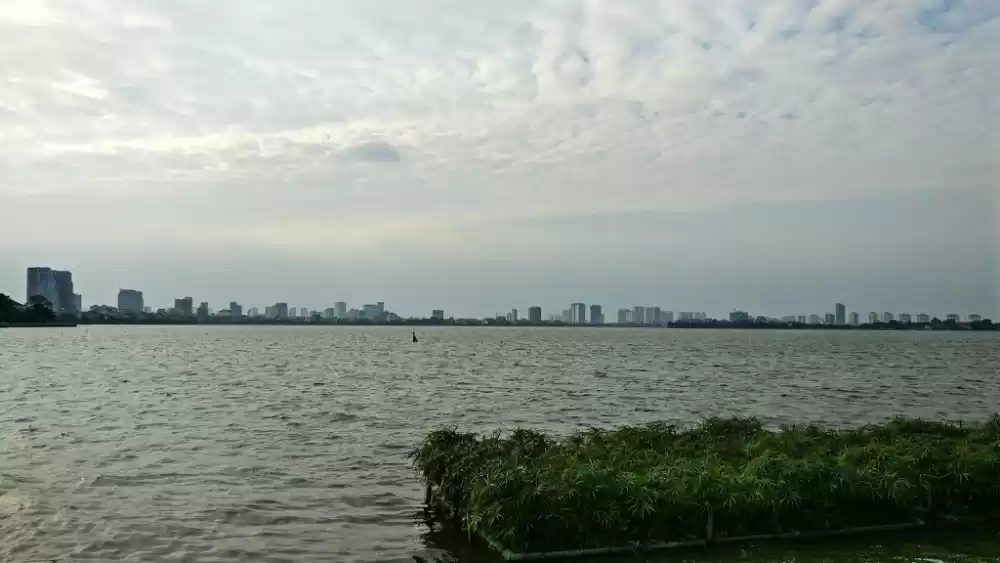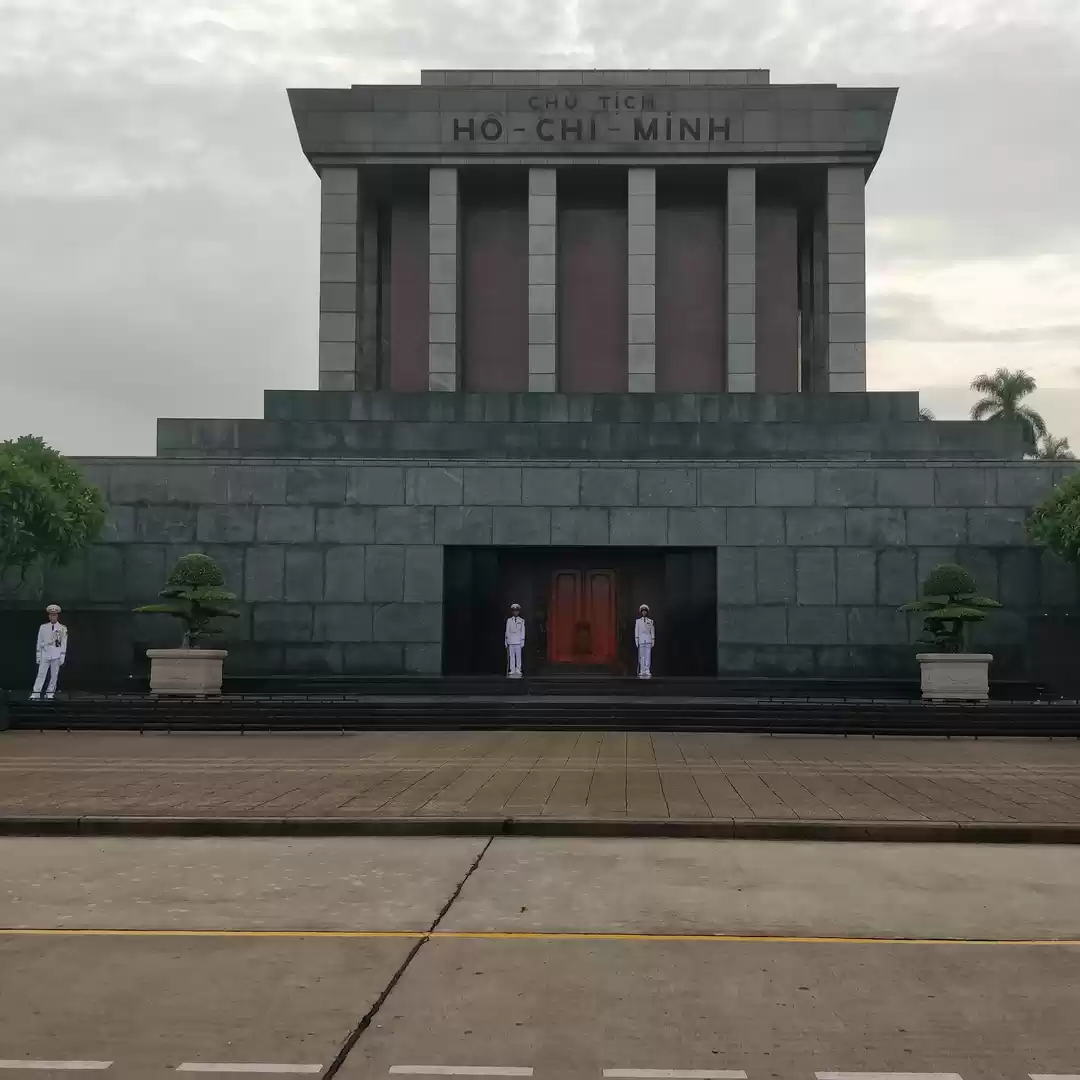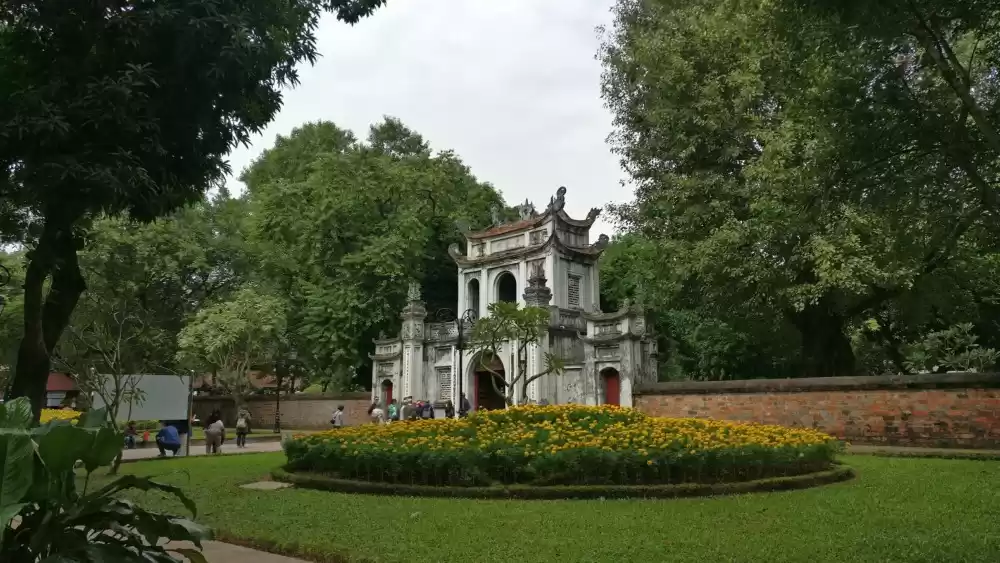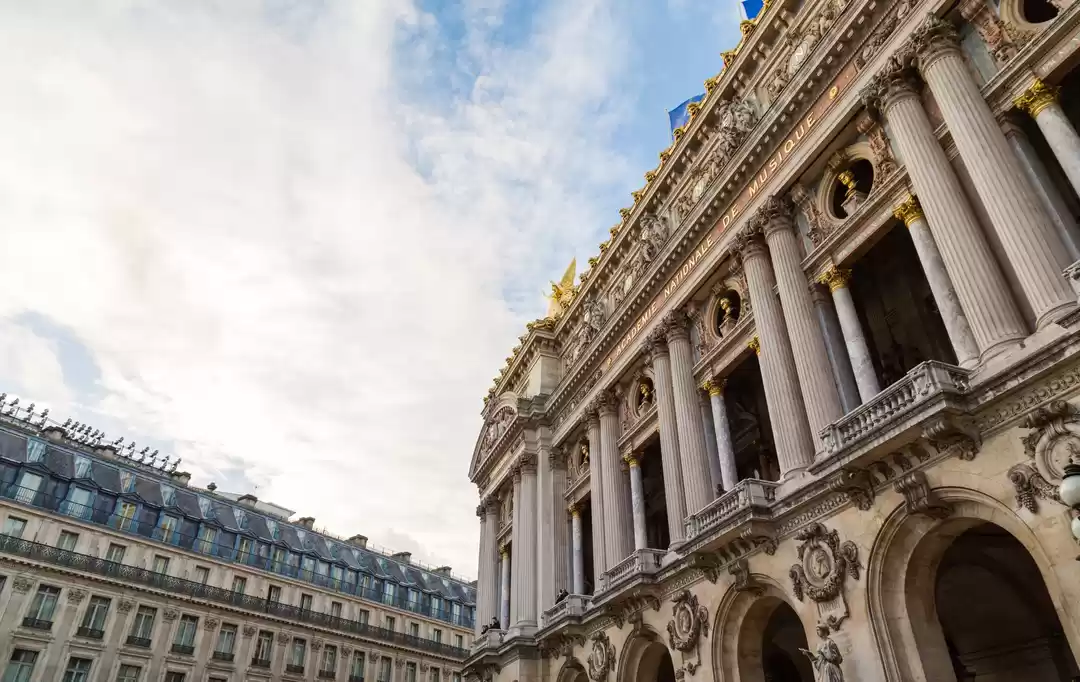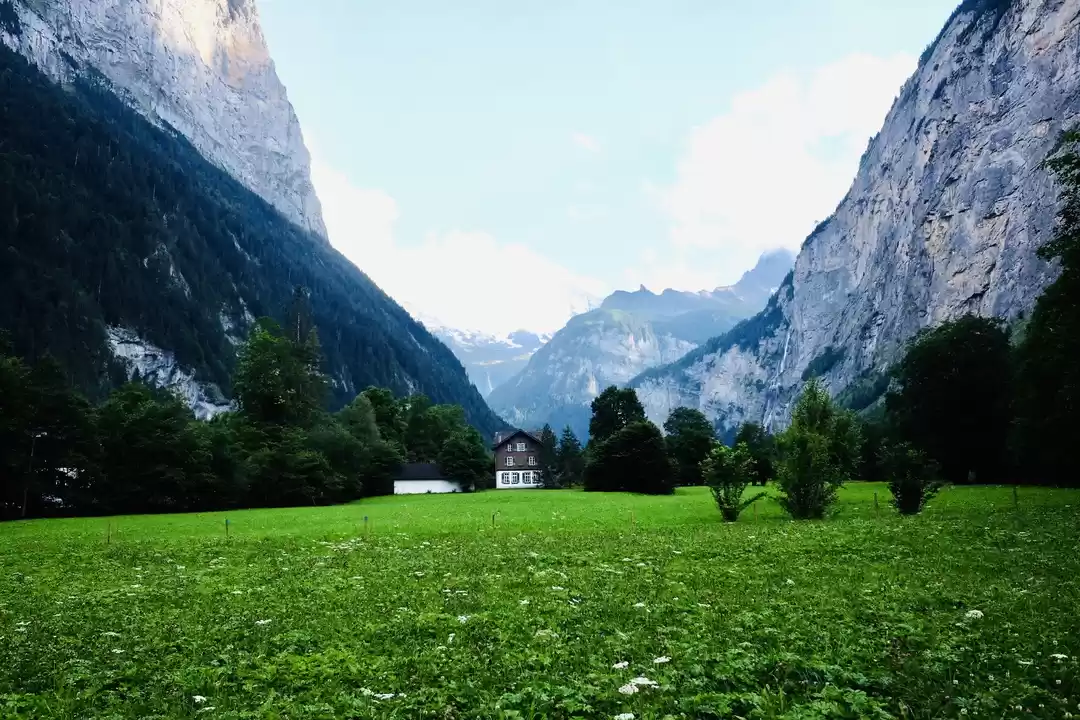Are you looking for a unique and memorable experience in Vietnam’s capital city? Do you want to witness the fusion of history, culture, and art in one magnificent building? If yes, then you should not miss the chance to visit the Hanoi Opera House, one of the most iconic and impressive landmarks in Hanoi. In this article, you will learn everything you need to know about the Hanoi Opera House, from its history, architecture, shows and events, to its tips and recommendations for visitors. Whether you are a fan of opera, ballet, drama, or folk music, you will find something to enjoy and appreciate at the Hanoi Opera House.
Overview
The Hanoi Opera House, also known as the Opera House in Hanoi, is a stunning example of French colonial architecture in Vietnam. It was built in the early 20th century by the French administration as a symbol of their power and influence in Indochina. The Hanoi Opera House is located in the heart of the city, on August Revolution Square, near the Hoan Kiem Lake and the Old Quarter. It covers an area of 2600 square meters and can accommodate up to 600 spectators. The Hanoi Opera House is not only a beautiful and elegant building, but also a witness and a participant of many important historical and cultural events in Vietnam. It has hosted many famous national and international artists, such as the Vietnamese composer Van Cao, the French singer Edith Piaf, the Russian ballet dancer Maya Plisetskaya, and the American jazz musician Herbie Hancock. It has also been the venue for many political and social movements, such as the August Revolution in 1945, the National Assembly of the Democratic Republic of Vietnam in 1954, and the Paris Peace Accords in 1973. Today, the Hanoi Opera House is a popular tourist attraction and a cultural hub that offers a variety of shows and events, such as opera, ballet, drama, and folk music. It is also a place where you can learn more about the history, architecture, and culture of Vietnam and its people.
History of the Hanoi Opera House
The history of the Hanoi Opera House can be traced back to the late 19th century, when the French colonial administration decided to build a grand and luxurious opera house in Hanoi, the capital of French Indochina. The construction of the Hanoi Opera House began in 1901 and was completed in 1911, under the supervision of two French architects, Broger and Harloy. The Hanoi Opera House was inspired by the Palais Garnier in Paris, the famous opera house that was the setting for the novel and musical The Phantom of the Opera. The Hanoi Opera House was designed in the neoclassical style, with a blend of European and Asian elements.

The Hanoi Opera House was inaugurated on December 9, 1911, with a performance of the opera La dame de pique by Pyotr Ilyich Tchaikovsky. The Hanoi Opera House soon became the center of cultural and social life in Hanoi, attracting many elite and wealthy Vietnamese and French audiences. The Hanoi Opera House also played a significant role in the political and historical development of Vietnam. It was the site of many important events, such as:
The August Revolution in 1945, when the Viet Minh, led by Ho Chi Minh, declared the independence of Vietnam from France and Japan, and established the Democratic Republic of Vietnam. The Hanoi Opera House was the place where Ho Chi Minh read the Declaration of Independence, which was broadcasted to the whole country and the world.
The National Assembly of the Democratic Republic of Vietnam in 1954, when the first constitution of Vietnam was adopted, and Ho Chi Minh was elected as the president of the country. The Hanoi Opera House was the place where the national anthem, the national flag, and the national emblem of Vietnam were officially introduced.
The Paris Peace Accords in 1973, when the United States, North Vietnam, South Vietnam, and the Viet Cong signed a peace treaty to end the Vietnam War. The Hanoi Opera House was the place where the representatives of the four parties met and negotiated the terms of the agreement.
The Hanoi Opera House also witnessed many changes and transformations in Vietnam’s society and culture. It was the place where many Vietnamese artists and intellectuals expressed their creativity and patriotism, such as the composer Van Cao, who wrote the national anthem of Vietnam, the poet To Huu, who wrote many revolutionary poems, and the painter Nguyen Gia Tri, who created many beautiful lacquer paintings. The Hanoi Opera House also hosted many foreign artists and performers, who brought new and diverse influences and inspirations to Vietnam’s culture, such as the French singer Edith Piaf, the Russian ballet dancer Maya Plisetskaya, and the American jazz musician Herbie Hancock.
The Hanoi Opera House also faced many challenges and difficulties, such as the damage caused by the bombings during the Vietnam War, the deterioration due to the lack of maintenance and preservation, and the competition from other modern and commercial entertainment venues. The Hanoi Opera House underwent several renovations and restorations, the most recent one being in 1997, when the building was restored to its original appearance and function. The Hanoi Opera House is now a national treasure and a cultural heritage of Vietnam, that continues to showcase the history, culture, and art of the country and its people.
Architecture of the Hanoi Opera House
The architecture of the Hanoi Opera House is a remarkable example of the eclecticism, which is a style that combines different architectural elements from various sources and periods. The Hanoi Opera House was mainly influenced by the Palais Garnier in Paris, which was built in the 19th century by the architect Charles Garnier. The Hanoi Opera House also incorporated some features from the classical Greek architecture, such as the columns, the pediments, and the statues. The Hanoi Opera House also adapted some elements from the local Vietnamese architecture, such as the materials, the colors, and the motifs.
The Hanoi Opera House consists of three main parts: the front hall, the mirror chamber, and the performance hall. The front hall is the entrance of the Hanoi Opera House, where the visitors can buy the tickets, check their coats, and admire the exterior of the building. The front hall has a large staircase that leads to the second floor, where the mirror chamber is located. The front hall also has two side wings that contain the offices, the dressing rooms, and the rehearsal rooms. The mirror chamber is the lobby of the Hanoi Opera House, where the visitors can relax, socialize, and enjoy the interior of the building. The mirror chamber has a rectangular shape, with a high ceiling and a marble floor. The mirror chamber is decorated with many mirrors, chandeliers, paintings, and sculptures, creating a sense of elegance and sophistication. The mirror chamber also has a balcony that overlooks the square in front of the Hanoi Opera House, where the visitors can have a panoramic view of the city. The performance hall is the main attraction of the Hanoi Opera House, where the shows and events take place.
The performance hall has a horseshoe shape, with a capacity of 600 seats. The performance hall has a large stage, with a proscenium arch and a curtain. The performance hall also has a dome, with a painting of a goddess and a chariot, representing the art and the glory. The performance hall also has a orchestra pit, where the musicians play the instruments. The performance hall also has a balcony, where the VIP guests and the press can sit. The performance hall is equipped with modern sound and lighting systems, ensuring the quality and the effect of the shows and events. The Hanoi Opera House is a masterpiece of architecture, that reflects the style, the taste, and the ambition of the French colonial administration, as well as the history, the culture, and the art of Vietnam and its people.
Shows and Events at the Hanoi Opera House
The shows and events at the Hanoi Opera House are the highlight of the cultural and artistic life in Hanoi, offering a variety of genres and forms, such as opera, ballet, drama, and folk music. The shows and events at the Hanoi Opera House are performed by both national and international artists and groups, who showcase their talents and skills, as well as their creativity and diversity. Some of the shows and events that have been performed at the Hanoi Opera House are:

The classical music, which is the most common and popular genre at the Hanoi Opera House, featuring the works of famous composers, such as Mozart, Beethoven, Chopin, and Schubert. The classical music is performed by the Vietnam National Symphony Orchestra, the Vietnam National Opera and Ballet, and the Hanoi Philharmonic Orchestra, as well as by guest soloists and conductors from around the world.
The opera, which is the most prestigious and sophisticated genre at the Hanoi Opera House, featuring the stories and the characters from the literature, the history, and the mythology. The opera is performed by the Vietnam National Opera and Ballet, and the Hanoi Opera, as well as by guest singers and directors from around the world. Some of the operas that have been performed at the Hanoi Opera House are La Boheme, Carmen, Tosca, and Madame Butterfly.
The ballet, which is the most graceful and elegant genre at the Hanoi Opera House, featuring the movements and the expressions of the dancers, accompanied by the music and the costumes. The ballet is performed by the Vietnam National Opera and Ballet, and the Hanoi Ballet, as well as by guest dancers and choreographers from around the world. Some of the ballets that have been performed at the Hanoi Opera House are Swan Lake, The Nutcracker, etc.
The drama, which is the most realistic and emotional genre at the Hanoi Opera House, featuring the dialogues and the conflicts of the actors, based on the scripts and the scenarios. The drama is performed by the Vietnam Drama Theatre, the Hanoi Drama Theatre, and the Youth Theatre, as well as by guest actors and directors from around the world. Some of the dramas that have been performed at the Hanoi Opera House are Hamlet, Les Miserables, The Cherry Orchard, and The Good Person of Szechwan.
The folk music, which is the most authentic and diverse genre at the Hanoi Opera House, featuring the songs and the instruments of the traditional and ethnic music of Vietnam. The folk music is performed by the Vietnam National Music, Song and Dance Theatre, the Vietnam National Academy of Music, and the Vietnam National Traditional Orchestra, as well as by guest singers and musicians from around the world. Some of the folk music that have been performed at the Hanoi Opera House are Ca Tru, Quan Ho, Cheo, and Xam.
The shows and events at the Hanoi Opera House are usually held in the evening, from 8 pm to 10 pm, on weekdays and weekends. The entrance fee ranges from 100,000 VND to 1,500,000 VND, depending on the type and the quality of the show and event. The booking process can be done online, by phone, or in person, at least one day in advance. The shows and events at the Hanoi Opera House are a great way to enjoy and appreciate the cultural and artistic richness of Vietnam and its people.
Tips and Recommendations for Visiting the Hanoi Opera House
If you are planning to visit the Hanoi Opera House, here are some tips and recommendations that will help you make the most of your experience:
Dress code:
The Hanoi Opera House does not have a strict dress code, but it is advisable to dress smartly and respectfully, especially if you are attending a show or an event. You should avoid wearing shorts, flip-flops, or hats, and opt for formal or semi-formal attire, such as suits, dresses, or skirts. You should also bring a jacket or a scarf, as the Hanoi Opera House can be quite cold inside.
Transportation:
The Hanoi Opera House is easily accessible by public transportation, such as buses, taxis, or motorbikes. You can also walk or cycle to the Hanoi Opera House, as it is located in the center of the city, near many other attractions and landmarks. You should avoid driving to the Hanoi Opera House, as the traffic and the parking can be very challenging and expensive.
Nearby attractions:
The Hanoi Opera House is surrounded by many other interesting and beautiful places that you can visit before or after your visit to the Hanoi Opera House, such as the Hoan Kiem Lake, the Old Quarter, the Ho Chi Minh Mausoleum, the Temple of Literature, and the One Pillar Pagoda. You can also enjoy the local cuisine and the nightlife in the nearby restaurants, cafes, bars, and clubs.
Best time to visit:
The best time to visit the Hanoi Opera House is during the dry season, from October to April, when the weather is pleasant and comfortable, and the shows and events are more frequent and diverse. You should avoid visiting the Hanoi Opera House during the rainy season, from May to September, when the weather is hot and humid, and the shows and events are less frequent and varied. You should also check the schedule and the availability of the shows and events before you visit the Hanoi Opera House, as they may change or cancel due to various reasons.
Experience:
The Hanoi Opera House is a place where you can experience the history, the culture, and the art of Vietnam and its people, in a unique and memorable way. You can learn more about the Hanoi Opera House by joining a guided tour, which is available in English, French, and Vietnamese, and costs 400,000 VND per person. You can also enjoy the shows and events by booking a ticket, which is available in different prices and categories, and includes a free drink and a souvenir. You can also explore the Hanoi Opera House by yourself, by admiring the exterior and the interior of the building, and taking photos and videos of the architecture and the decoration.
The Hanoi Opera House is a guide to Vietnam’s cultural gem, that you should not miss when you visit Hanoi. It is a place where you can discover the past, the present, and the future of Vietnam and its people, through the beauty and the diversity of the history, the culture, and the art. The Hanoi Opera House is a place where you can enjoy and appreciate the cultural and artistic richness of Vietnam and its people, through the variety and the quality of the shows and events.
The Hanoi Opera House is a place where you can experience the history, the culture, and the art of Vietnam and its people, in a unique and memorable way. The Hanoi Opera House is a place where you can have a wonderful and unforgettable time in Hanoi.

